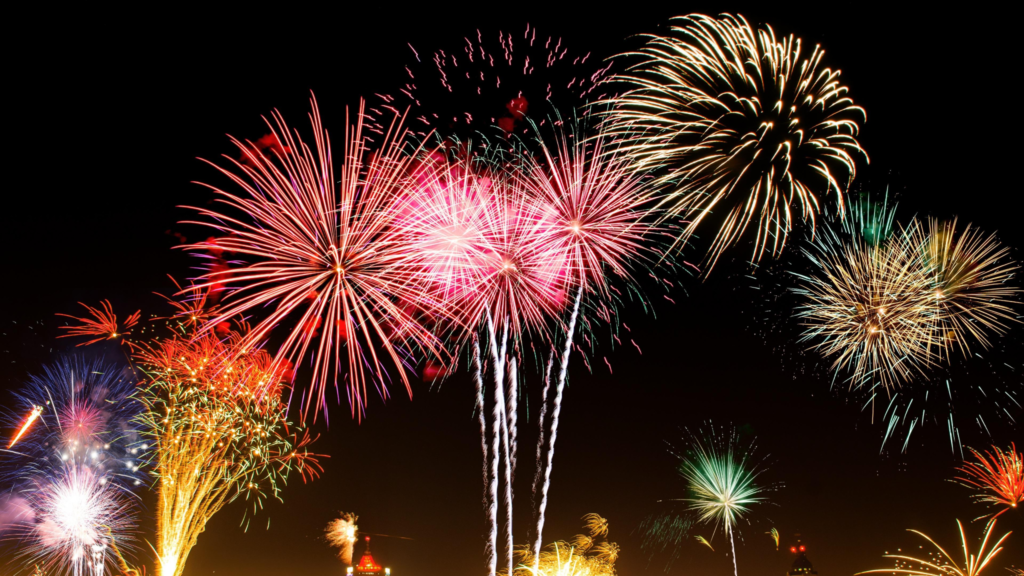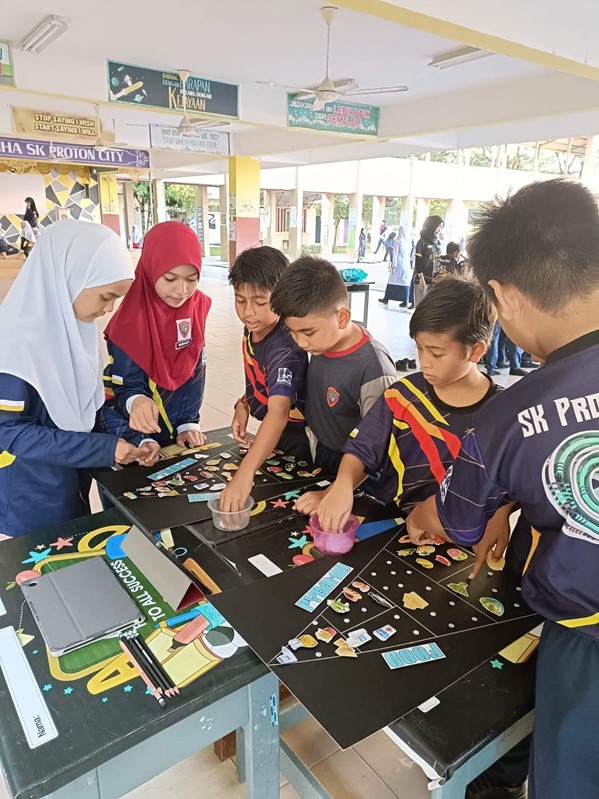The minute you see and hear them, you know it is the start of a joyous celebration. Be it a national holiday or a special occasion, one tradition connects us all: fireworks. The loud cracks and booms and the dazzling magnificence of aerial fireworks displays are truly a treat for the eyes. Beyond the beauty, have you wondered how such a huge explosion displays various shapes and colours in the sky? Or what substance was needed to create such a beautiful explosion? Everything we see during fireworks is physics and chemistry in action.
Originating from China, legend has it that fireworks were accidentally invented by a Chinese cook who happened to discover how to make explosive black powder by mixing sulphur, charcoal and potassium nitrate or saltpeter (a salt substitute used in meat curing) – three common ingredients found in a kitchen. When the mixture was compressed into a bamboo tube, the mixture exploded!
The charcoal and sulphur are fuel, and the saltpeter is an oxidiser, which is important in creating an explosion. The combustion of this mixture gave rise to what the modern world now identifies as gunpowder. Isn’t it ironic how such a beautiful yet dangerous invention was created by mistake?
This black powder also helps propel the stunning effects, like the colour that comes with the explosion. No firework display is complete without the array of colours that paint the sky. You may wonder, what makes the various colours of fireworks? Well, that’s chemistry, too! The colour ignited comes from metal compounds packaged as salts inside the fireworks. If you have tried heating metals with a flame, like a Bunsen burner from the school science lab, you would know that they burn intensely in bright colours. This reaction also happens with fireworks!
What are fireworks if not for the glistening greens and ravishing reds? Different metal compounds produce different colours, which we see during a fireworks display. Copper salts give green colour, whereas strontium or lithium salts give bright red colours (remember the periodic table!). Although producing colours may seem easy, that’s not always the case. Have you realised that you very rarely witness blue fireworks? Fireworks chemists have claimed that blue is the hardest colour to make, as light blues may appear too light, whereas deep blues may seem too dark, making it hard to be seen in the night sky. To make the “perfect blue” is a challenge since blue light has a shorter wavelength.
Now you may think, what about the flashes and sparkles along these colours? These effects are made by adding magnesium, titanium, and aluminium to produce white sparks, whereas iron gives gold sparks. No good firework is complete without exciting sound effects. The mixture is kept in a confined place where gas cannot escape to make a boom or a bang sound. When it burns, pressure begins to build and causes firework explosions. Making a whistling sound is slightly harder than making a boom, as this sound is created when there is a small opening for compressed gas to exit. The whistle sound type depends on the opening size and velocity of the gas which escapes.
Every action has an equal and opposite reaction (Newton’s third law of motion) – a law that applies even to fireworks. Why does a firework shoot into the air and not to the ground? When the explosive black powder burns, it produces exhaust gases that fire backwards. Like a space rocket engine, the backward force creates an equal and opposite force by propelling the fireworks forward and into the sky.
Looking closely, you may realise that fireworks always make symmetrical explosions. They never launch in a way that sends all their sparkles and stars to just one side. The fireworks always launch so that if one part of the fireworks goes to the right, the other part always goes to the left. Fireworks are pleasing to the eye thanks to the law of conservation of momentum. The law requires the momentum of the fireworks to be the same before and after the explosion. Therefore, when they explode, both sides of the explosion must be exactly balanced.
Like Belva Plain’s quote, “Danger hides in beauty and beauty in danger” – fireworks are a fun treat, but if mishandled, the explosions and chemicals are so dangerous it can cause extreme burns or, worse, kill you. The loud explosions of fireworks can also cause distress to pets and stray animals.
So the next time you are admiring fireworks, be safe and considerate and remember that fireworks not only paint the sky with colours, they paint it with science as well!
Download the infographic titled Fireworks: The Missile in Disguise
Let’s test your knowledge about fireworks now: Fireworks! – ESTI DOT MY
Note: The author is an undergraduate student from Sunway University studying for a bachelor’s degree in Biomedicine.






